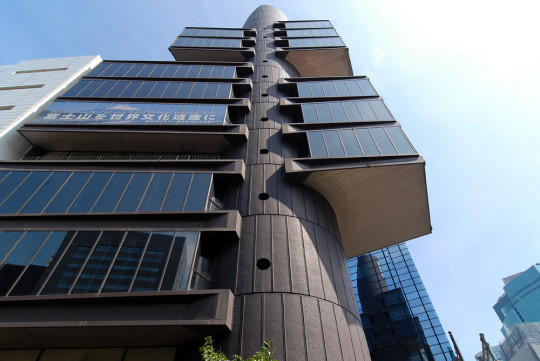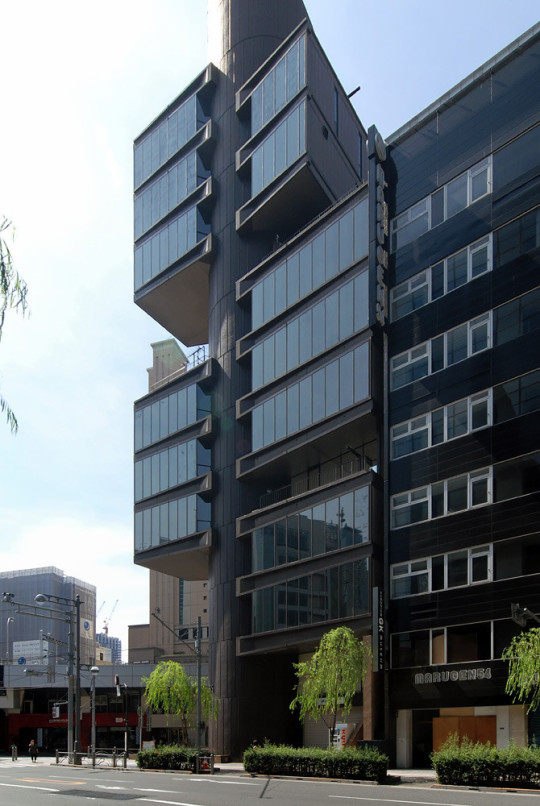#kenzo tange
Explore tagged Tumblr posts
Text

Shizuoka Press and Broadcasting Center by Kenzo Tange. via Javier P. Turiel
93 notes
·
View notes
Text








1171. Kenzo Tange /// Outer Circle House /// Zushi, Kanagawa, Japan /// 1987-89
OfHouses presents: Japanese Fields OfHouses, part XI. (Photos: © Shinkenchiku-sha. Source: ‘Jutakutokushu’ 04/1990.) — This project will be published in our upcoming book: ’Japanese Fields | OfHouses.’
#Fields11#Kenzo Tange#japan#80s#ofhouses#oldforgottenhouses#www.ofhouses.com#thecollectionofhouses#japanesefieldsofhouses
150 notes
·
View notes
Text

Fiera District, Bologna / Italy. Designed by Kenzo Tange. Photo: Matthias Heiderich
847 notes
·
View notes
Text

Kagawa Gymnasium. Scheduled for demolition.
Built between 61-64 by Pritzker Prize winner Kenzo Tenge.
#monochrome#urban photography#kagawa prefecture gymnasium#japan#kenzo tange#post war#modernism#architecture
43 notes
·
View notes
Text

Kenzo Tange | Architecture lab
22 notes
·
View notes
Text

Kenzo Tange, September 4, 1913 – March 22, 2005.
27 notes
·
View notes
Text

Isamu Noguchi, Piazza | Fiera District, Bologna, Italy, 1979 VS Mario Bellini, CMC7-7004, Olivetti, 1963
#isamu noguchi#sculpture#column#bologna#italy#italia#kenzo tange#fiera district#contemporary art#mario bellini#olivetti#italian design#made in italy#Automatic reader#product design#design
23 notes
·
View notes
Text

Embassy of the State of Kuwait, Mita, Tokyo
January, 14th, 2024
#leica#black and white photography#photographers on tumblr#original photographers#street photography#light and shadow#architecture#kenzo tange
39 notes
·
View notes
Text


Kenzo Tange (1913-2005) undoubtedly was Japan’s most important postwar architects by virtue of his built work but also because he left a mark on a range of young architects: as professor at Tokyo University Tange counted Fumihiko Maki, Arata Isozaki and Kisho Kurokawa among his students, all of them important architects in their own rights. At the same time Tange cast his net wide and took part in the postwar CIAM congresses and subsequently also built in Europe and taught in the US.
To my knowledge the present volume still is the most comprehensive publication on the architect: „Kenzo Tange 1946-1996: Architecture and Urban Design“, jointly edited by Massimo Bettinotti and Tange and published by Electa in 1997. The book is a lavishly illustrated monograph highlighting Tange’s most important designs from five decades with each project accompanied by plans, drawings and insightful texts in English and Italian. What is particularly charming about the book is that it is half biography and half work catalogue: in the first part the architect takes the reader through his biography, his major projects and career events while the second and more comprehensive part is dedicated exclusively to his works. These are again subdivided into urban plannings and architecture and accompanied by explanatory texts, plans and extensive photo spreads.
Although the book by its very nature isn’t a critical evaluation of the architect’s work it nonetheless is a very good point of departure for a deeper discussion of Tange’s complete works.
53 notes
·
View notes
Text








Books 31-40 of the year 📖
#read in 2024#richard hughes#aleksandr solzhenitsyn#georges perec#alberts bels#kenzo tange#richard brautigan#harald voetmann#jonathan barnett#talks
8 notes
·
View notes
Text

The Shizuoka Press and Broadcasting Center, by Kenzo Tange.
Built in 1967, standing close to the former Nagakin Capsule Tower in Ginza. Already back then, space was scarce in Tokyo, so this older example of Metabolism shows how to maximize land use. Full article here









All credit to the linked website | Location on Google Maps
48 notes
·
View notes
Photo

Yasuhiro Ishimoto
Kenzo Tange’s Katsura
Kenzo Tange is the co-author of Yasuhiro Ishimoto in “Katsura: Tradition and Creation in Japanese Architecture”. “Tradition and Creation in Japanese Architecture” is also the title of Tange’s thesis placed at the beginning.
http://zeitgeist.jp/en/katsura-imperial-villa/
[ + ]
52 notes
·
View notes
Video
St. Mary’s Cathedral -2, Tokyo 2024 by Julius Tjintjelaar Via Flickr: Architect Kenzo Tange. TS lens, shift up. Maximum Point of Perspective. No long exposure. This photo and the previous one are both handheld. No perspective correction in PS. Slight crop only. Image processed with the Artisan panel.
#BW#B&W Fine Art architecture#B&W Fine art#B&W Artisan Pro X#Architectural Photography#Japan#Kenzo Tange#architecture#black and white#BW Photography#Fine Art Architecture#joel tjintjelaar#tjintjelaar#St. Mary's Cathedral#Tokyo#flickr
4 notes
·
View notes
Text


St Mary’s Cathedral, Tokyo (1964) — Kenzo Tange
10 notes
·
View notes

